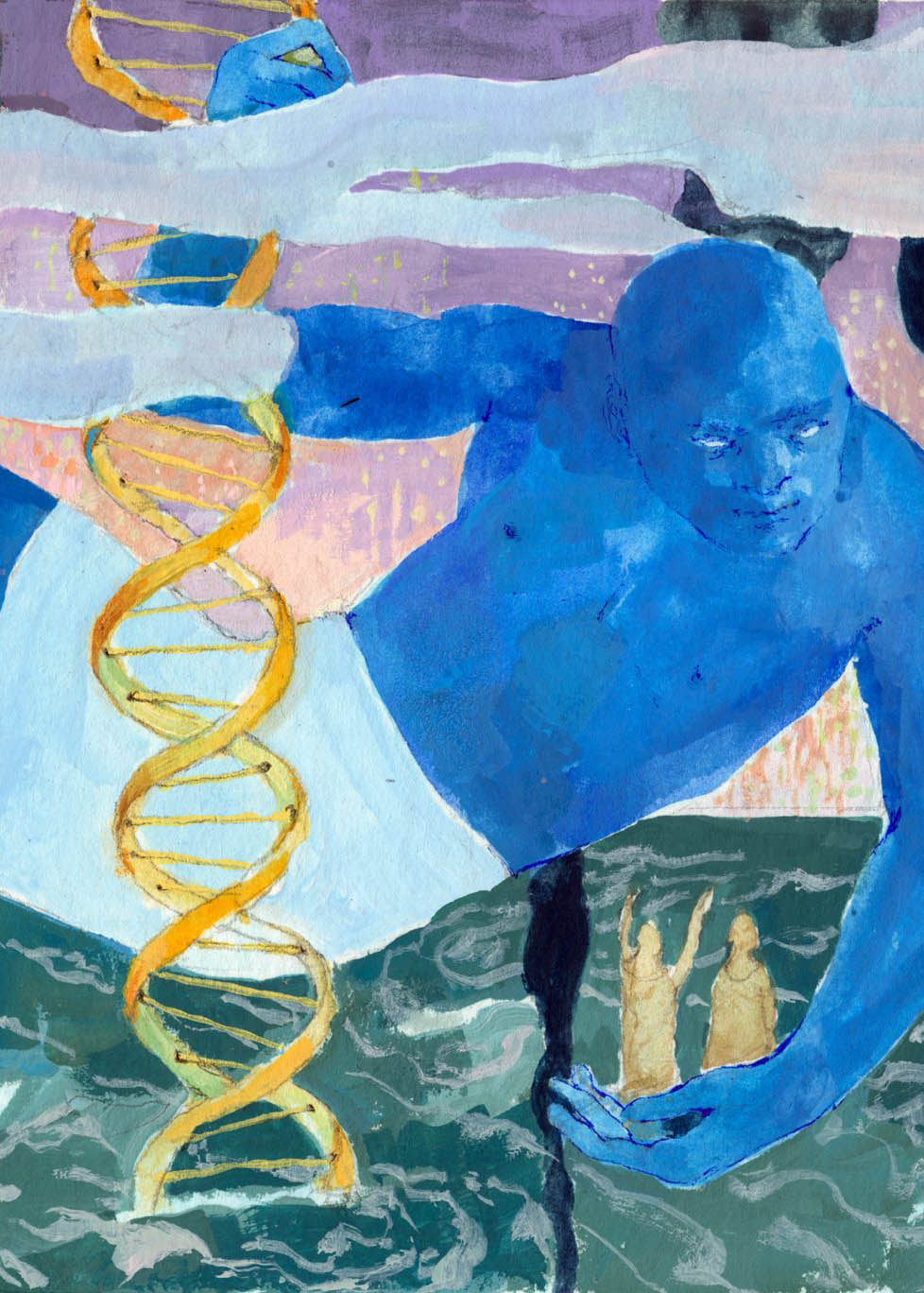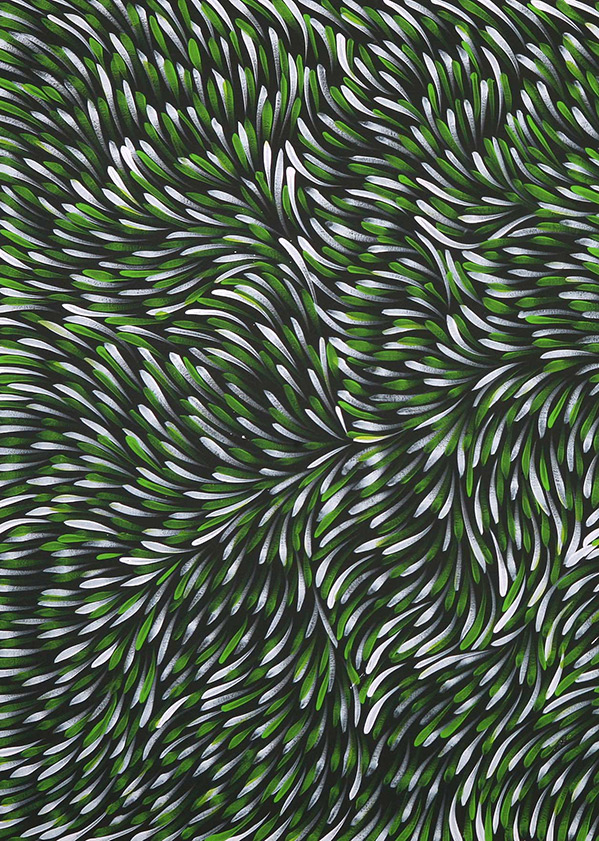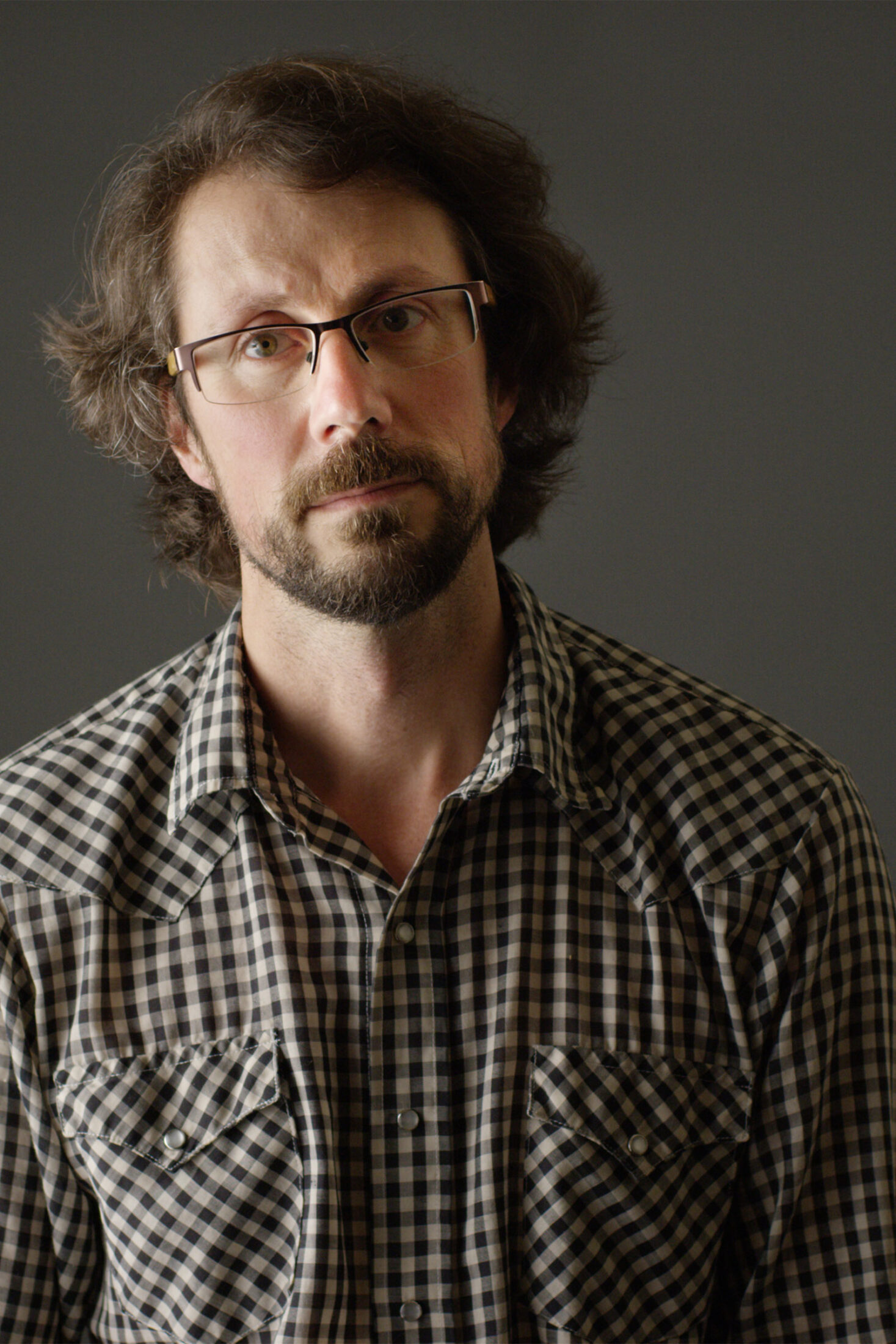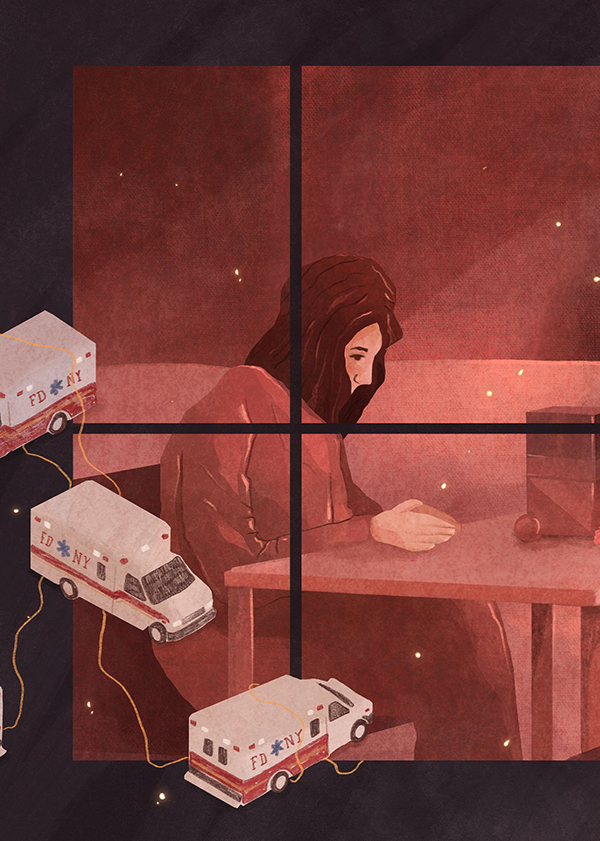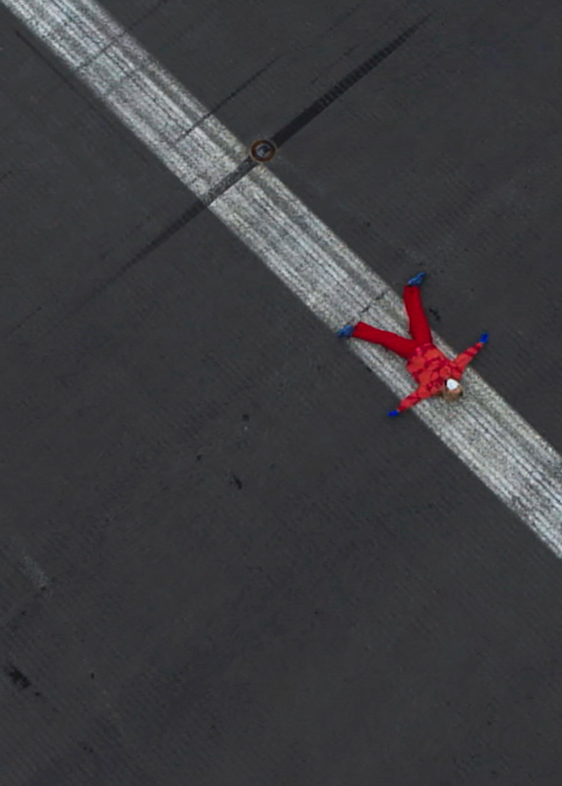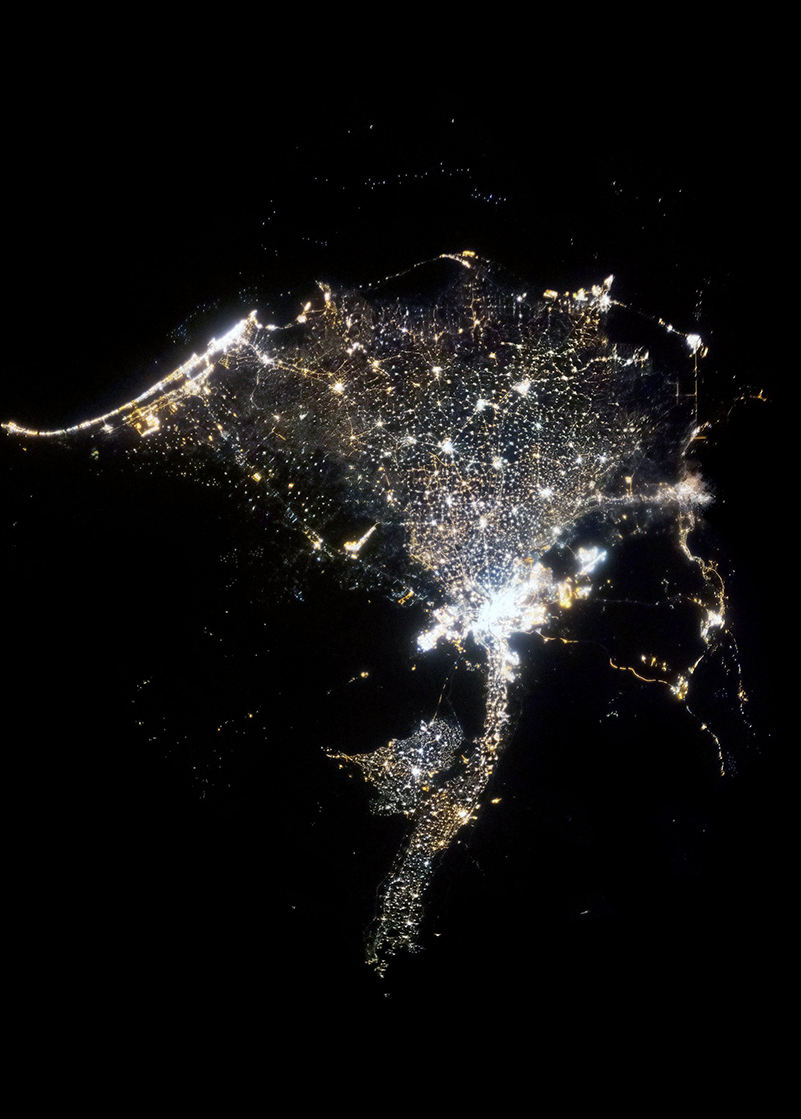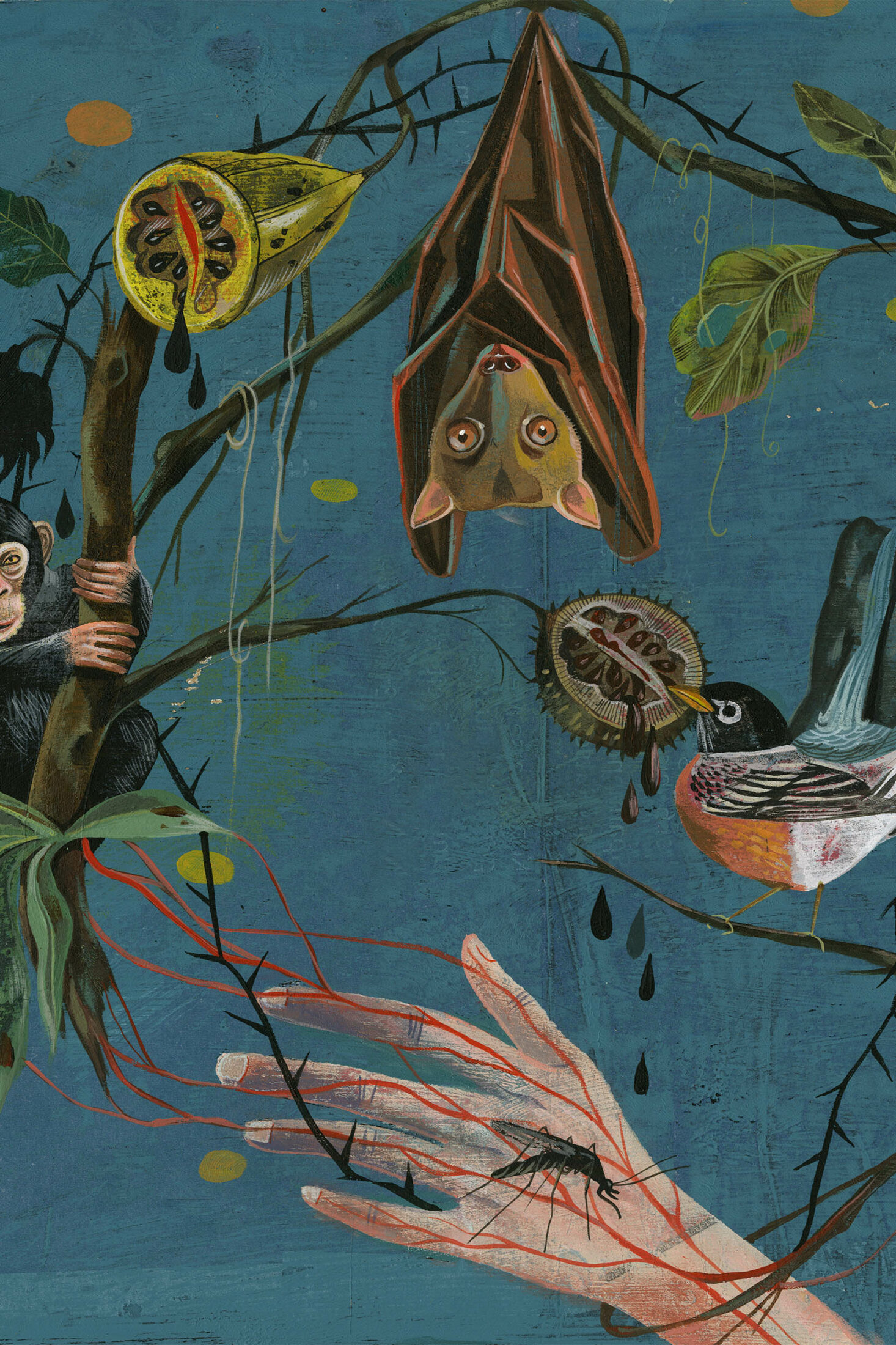
Shaking the Viral Tree
David Quammen is a science writer, journalist and author of numerous books including Spillover: Animal Infections and the Next Human Pandemic, EBOLA: The Natural and Human History of a Deadly Virus and The Tangled Tree: A Radical New History of Life.
Emmanuel Vaughan-Lee is an author, Emmy- and Peabody Award–nominated filmmaker, and a Sufi teacher. He has directed more than twenty documentary films, including Taste of the Land, The Last Ice Age, Aloha Āina, The Nightingale’s Song, Earthrise, Sanctuaries of Silence, and Elemental, among others. His films have been screened at New York Film Festival, Tribeca Film Festival, SXSW, and Hot Docs, exhibited at the Smithsonian Museum and London’s Barbican, and featured on PBS POV, National Geographic, The New Yorker, and The New York Times Op-Docs. His first book, Remembering Earth: A Spiritual Ecology, is forthcoming from Shambhala in summer 2026. He is the founder, podcast host, and executive editor of Emergence Magazine.
In this interview, science writer David Quammen, author of Spillover: Animal Infections and the Next Human Pandemic, speaks about the root causes underlying the current pandemic and explores the ways in which viruses are embedded in the same systems of ecology and evolutionary biology that we are. As we disrupt wild ecosystems and shake these viruses free, COVID-19 offers an opportunity to reimagine our relationship with the natural world.
Transcript
Emergence MagazineDavid, thank you very much for joining us this morning. The coronavirus is what is known as a zoonotic virus. Could you start off by explaining what a zoonotic virus is and how it ended up infecting humans in a market in Wuhan, China?
David QuammenWell, a zoonosis is an animal infection that’s transmissible to humans. That can be a virus or a bacterium or any other sort of infectious bug, but a zoonotic virus is one that comes out of a nonhuman animal and somehow passes into humans. If it takes hold and can replicate and cause disease and transmit, then we call that a zoonotic disease. Sixty to seventy percent of our infectious diseases fall into that category, some of the old plagues and some new plagues like this one.
How does it happen? Well, all animals, including wild animals, carry their own, in some cases, unique viruses, a great diversity of viruses. We don’t have any idea really how many viruses are out there. Animals, plants, fungi, all those cellular creatures, carry viruses. Viruses are not cellular. They’re just little capsules containing genetic information that can replicate themselves in the cells of other creatures.
When a virus passes from a nonhuman animal into a human, we call that moment “spillover.” Hence the title of my book.
The animal from which it comes, in which the virus lives sort of inconspicuously, we call that the reservoir host or the natural host. I usually call it the reservoir host. So you’ve got a reservoir host in China, probably a horseshoe bat. It’s carrying a coronavirus that has never
been seen in humans before.
That bat is captured, probably, live and put in a cage and taken to a wet market in the city of Wuhan, China. I think now we know that was the Huanan Wholesale Seafood market, but it was selling much more than seafood. I’ve been in some of these markets and I’ve seen that they sell wild animals. They sell domestic animals. They sell seafood. There are live animals in cages, sometimes stacked on one another, all kinds of wild birds, as well as domestic poultry. There are reptiles, turtles, sometimes snakes, bats, pangolins, civets, pigs, all in a great mixing bowl.
What seems to have happened in Wuhan—we don’t know for sure—but what seems to have happened is that a virus from a horseshoe bat spilled over into probably some other kind of an animal, got amplified in that animal, and then that animal was sold, was butchered, somehow infected maybe a few dozen people, and those people became the primary contact cases. And then, from them, it found itself with the ability to spread from one human to another and spread out into the community of Wuhan.
This was all going on in December of last year and on New Year’s Eve the alarm bells rang at the WHO, the CDC, and elsewhere for some friends that I know in the scientific world, and the word was that there was a new disease, an infectious disease, spreading in Wuhan, China, suspected to be a virus. The virus was not yet known. The origin was not yet known, but it could be a big one. That was New Year’s Eve, and we have seen it unfold from there.
EMAs far as I understand, the virus was actually detected in a cave in Yunnan, a thousand miles from Wuhan, back in 2017, and you’ve written about this. If it was detected back in 2017, why wasn’t something done about it?
DQWell, because lots of viruses are detected in other creatures. Some of them look dangerous. Some of them look innocent. There are scientists who do that. There are not many; there are not enough. There’s not enough funding for them to do it as much as would be good. I’ve recently talked to a scientist who is organizing a global initiative called the Global Virome Project to try and do more of that.
But when scientists spot a new virus and there’s reason to suspect that it could be dangerous, then they publish that, and they alert people to that. And that happened. I think the virus was detected maybe in 2015. In 2017, the scientists publish a paper saying, here’s a new coronavirus. We found it in horseshoe bats in a cave in Yunnan. It could be dangerous. It’s not identical to the original SARS coronavirus from 2003. It’s distinct from that, but it has characteristics, judging from its genome and judging from the fact that it is a coronavirus—it could be dangerous.
So the scientists did their job. They published that paper. What happens then? Well, essentially nothing happens then. What should happen? Well, there should be a system for people responding to that threat. There should be closures of the wild animal markets in China. There should be preparedness around the world. There should be a readiness to take the genome of that virus and turn it into test kits quickly, produced en masse, available around the world. That’s all expensive stuff for something that might happen and might not happen and because it’s expensive and it might not happen, policy makers, leaders, legislators are reluctant to pay for it.
EMRight, and once a virus leaves its reservoir host, as far as I can understand, it can mutate and mutate quickly. Could you talk a bit about this?
DQThat’s right. And that’s especially true of coronaviruses and several other groups of viruses. Some viruses evolve much more quickly than others. Some people don’t even know: a virus, is it alive or not? Well, that’s a philosophical and semantic discussion, but does it evolve? Yes, it replicates itself. It carries either DNA or RNA and replicates itself using the same genetic code that the rest of the world uses. So, in that sense, it’s closely connected to life, even if it’s not alive. Viruses evolve, but some viruses evolve much more quickly than others, and the reason for that is differences in their genomes.
Some viruses carry a genome composed of the DNA double-helix molecule that everybody knows about, which replicates itself rather accurately and stably. And when it makes a mistake with the letters of the genetic code while replicating itself, there is a proofreading mechanism so it can correct itself. So double-strand DNA, double-helix viruses tend not to evolve very quickly.
There are several other different kinds, one of which is a single-stranded RNA virus. RNA is another genetic molecule, closely related to DNA, but a little bit different. And a single strand of it, when it replicates itself, tends to make a lot of mistakes, and those mistakes are not corrected. So as a virus replicates, it is producing imperfect copies of itself. It’s producing a population of variant offspring that differ from one another. So you’ve got a population of variant individual virus particles inside a host, and they’re competing with one another for resources, for the opportunity to replicate further.
What do you have when you have a population of variant individuals competing with one another with differential success of reproduction? That’s called evolution by natural selection. Darwin 101. And that’s what leads to fast adaptation of coronaviruses, because they are single-stranded RNA viruses.
EMZoonotic viruses can often live within their animal hosts without causing any harm, but it is when they spill over into an amplifier host, an animal amplifier host and/or humans, that they manifest as diseases. Why is this?
DQWell, it’s because the virus gets a new opportunity in a new environment, and if it’s lucky, and if it’s adaptable, it finds that it can replicate abundantly in that new environment, that new host, and if it evolves further it can even transmit from one individual of that new host to another.
Maybe the old host has an immune system that has adapted to that virus over time and that virus has adapted to the immune system, so that in the old host, the reservoir host, it lives chronically at low levels of replication, but over long periods of time. That is a type of genetic strategy, not a conscious strategy, but it is a strategy, and it works. The virus maintains itself in the reservoir host population over long stretches of time.
Then, suddenly, it gets a new kind of opportunity, a new kind of host, and it finds that it can replicate abundantly in this new host, and hey, look, with a few more adaptations, a few more mutations, a little bit more natural selection, it can jump from this new reservoir host, individual number one, into individual number two, number three, number four. If it does that, it is seizing an opportunity. It doesn’t have purpose. It just has the ability to seize opportunity. If the new host is Homo sapiens, if it’s us humans, then that virus has seized a huge opportunity for vast evolutionary success because it can replicate quickly, spread from individual to individual, ride on airplanes, get around the planet in twenty-four hours, spread to more people and become possibly the most successful and abundant virus in the world. And that’s what happens with pandemics.
That’s what happens with the pandemic flu. That’s what seems to be happening with this, and that’s what happened with the primary virus that causes the AIDS pandemic, a virus called HIV-1 group M, that results from a single spillover from one chimpanzee into one human, in the southeastern corner of Cameroon back in 1908, give or take a margin of error. All of this is known from good molecular work, and I’m jumping around here, but it’s worth following this through.
That virus—infecting one human from one chimpanzee—has spread around the world now and killed thirty-three million people, going on thirty-four, and infected millions more. That’s a very successful virus.
EMYou’ve talked about how human beings as a relatively young species are more susceptible. Can you talk a little bit about this?
DQWe are more susceptible because these viruses are new to us. As I say in the book, everything comes from somewhere. Our viruses that cause our infectious diseases generally come from animals in the relatively short term, because we are a relatively young species. There are a few viruses that have been in humans for so long that they have evolved away from their origins, and they are now distinct from whatever animal virus they originally descended from.
Smallpox is one example, and polio is another example. And it’s no coincidence that those are two of only very few, severe infectious diseases that we have been able to eradicate or very nearly eradicate from humans. We’ve eradicated smallpox from humans. There are no current smallpox cases on the planet. It’s not circulating. Smallpox virus only exists frozen in a few laboratories.
The last I’ve heard we have nearly eradicated polio from the human population, but there are a few places, like Afghanistan, I think possibly Nigeria, where there are difficult political and military situations, where there are still little flare-ups of polio and it hasn’t been eradicated yet, but almost. Why can we do that? Well, because there is no animal host for polio or for smallpox anymore. Those are purely human viruses now.
EMIn Spillover you write about how zoonotic diseases exist within, and are part of, a broader ecosystem than just their hosts. Can you talk about why this is so important?
DQDo you mean the ways in which human disruption of ecosystems brings us into contact with these viruses?
EMYeah, it seems like that’s what you were talking about as one of the main causes that we’re dealing with.
DQAbsolutely, so the spillover of these diseases into humans and the spread into pandemics, it’s essentially an ecological and evolutionary process. That’s actually one of the reasons why I wrote Spillover. It’s my usual beat, ecology and evolutionary biology.
I got interested in infectious diseases, emerging viruses like Ebola, and then I found, lo and behold, this is all about ecology and evolutionary biology. On the ecology side, there are many, many diverse species of animal, plant, bacteria, fungi, and other creatures living in our diverse ecosystems. Each of those carry viruses. Each of those may carry its own unique viruses. Scientists are just trying to find out how many viruses are out there.
When we humans come in contact with those animals and plants and other creatures, we expose ourselves to those viruses, in particular when we come in contact disruptively, when we go into those diverse ecosystems, those tropical forests and those savannahs where there is great diversity, and we start killing animals for meat. We start cutting down trees for timber. We build timber camps. We build mining camps. We harvest the wild animals further to feed the laborers in the timber camps and the mining camps. Or we capture the wild animals and ship them away live, or dead, to be consumed by other people elsewhere.
Doing all that, we disrupt those wild ecosystems. We essentially—this is sort of a metaphor—we shake those viruses loose from their natural hosts and give them the opportunity to seize on a new host. And there we are: humans. In some cases then, those viruses seize a new ecological situation, a new environment, namely a human body, and then comes evolution. If they have a high intrinsic capacity for evolution, then they are all the more likely to adapt to us and become our diseases and sometimes our epidemics and pandemics.
EMI think you said a virus is interconnected with other organisms at the scale of landscapes. That really struck me, because it forces us to think about a virus not just contained within a creature, say bats, which seems to be the culprit here in the coronavirus, but in relationship to a much broader web of life.
DQRight, yes. I mean, they are ecological creatures with niches and with the capacity to evolve, and generally they have their natural environments, but all of those creatures are connected to one another in intricate webs of interaction. We humans are part of those ecosystems too. I mean anciently we have been. I’m not saying that these wild ecosystems have been wilderness in the sense that we used to think about it, the absence of humans.
All of these places, or almost all of them have had human populations too, but living with very low impact, at very low population densities, living, to some extent, in harmony with the rest of the ecosystem, living off of it, harvesting animals and plants for food or for medicine, but not causing great disruption, and living in small groups of people that are not closely interconnected with big groups of people elsewhere.
So what has changed in the modern world is that there are more of us, more interconnected, causing more disruption. Everything has been scaled up. Now we’re the most dominant animal on the planet, arrogating to ourselves a huge proportion of all the resources, all the energy, all the protein, and making ourselves important and strong, but also making ourselves a huge target for these creatures that need habitat, that need environments, that need ecological niches in which to continue living.
EMZoonotic viruses have been around for a very long time, as you’ve said, but in the last fifty years we’ve really seen an emergence of many, many more in a short amount of time. You said that we’ve always been existing in spaces, but not to the level of disruption that we’re dealing with right now, and so this emergence of so many viruses is directly in correspondence with the increase of disruption to many environments in terms of ramp and scale.
DQRight, and as I say in my book, there’s been a drumbeat of these new emergences of viruses from animals that infect humans. Mapucho in Bolivia 1962, coming out of rodents. Marburg in 1967 in monkeys that were shipped from Uganda to Marburg, Germany, for use in medical labs. Ebola emerging for the first time we know of in 1976. AIDS, HIV, getting recognized for the first time in 1981.
It goes on. In the late 1980s, there was something. In the early 90s, 1992, we became aware of hantavirus coming out of rodents in the Southwest, the Four Corners area of the US. Bird flu emerging in Hong Kong in 1997. In 1998, it was Nipah virus in Malaysia, coming out of bats, getting into pigs, and then getting into people, killing people.
On and on. SARS, 2003, also coming out of a bat. MERS, 2012, another coronavirus in the Arabian Peninsula, coming out of bats, getting into camels, going from camels to humans. Zika virus, another new one in 2014.
On and on, and now here we are with COVID-19 in 2020.
EMOne thing that really struck me when I was reading Spillover is how you talk about the fact that these viruses are really part of a larger pattern that reflect what we’re doing and aren’t just happening to us. It seems like, in the last few weeks, with all the news about the coronavirus swamping everyone’s world, there hasn’t necessarily been a discussion that looks to any of these root causes that you’re describing, the discussion generally suggests that we are the victim here rather than playing an active part.
DQRight, there hasn’t been enough discussion of that. People are alarmed. People are scared. People are angry at one another. Some people are angry at the Chinese. Other people are angry at public health services. We’re all angry at Donald Trump.
There’s not enough time. There’s not enough bandwidth or air in the room for discussion of root causes. With the hospitality of people like you, Emmanuel, I’m talking about it to whoever I can. The fact that these things are part of a pattern, I just described that pattern, and that, yes, we need to flatten this curve. We need to deal with this pandemic. We need to take the public health measures that will bring this thing under control. And that’s still some ways off.
We need resources. We need money. We need will to do all the things that are necessary. And I hope we will. I think we will eventually get this thing under control and put this fire out. But as I’ve said before, when we get this thing under control, when we get the fire put out, we should celebrate for five minutes, and then we should start thinking about and planning for the next one, because there will be a next one.
EMYour op-ed in The Times back in January—when this was mostly confined to China and a few other countries, or at least appeared to be—talked about this, the short-term response and then the longer term mortal challenge. In that piece, you outlined a list of all the long-term challenges we’re dealing with that, in a sense, were many of the major ecological issues of our time, as well as issues related to poverty and inequality.
So as much as this virus may wake people up to our interconnectedness and vulnerability, it seems like it’s a monumental challenge that we’re facing to address a potential next big one that might come up in a few years or continue to come up year after year.
DQIt is a monumental challenge, and there are things on the scientific and public health side that I listed in that op-ed and that one can list: better viral discoveries so we know what’s out there and might come into us, better diagnostics so that we can produce test kits very quickly, better public health reactions, more resources, more excess capacity for our hospitals, et cetera, that prepare us to respond to these things. Coherent, internationally collaborative plans for assessing to what extent you want to cut down air travel and to what extent you want to continue to let expertise flow between one country and another. All of that.
But even beyond that—which is very expensive, and all that stuff, and will require really taking this kind of threat seriously—all of that is essentially reaction, and there needs to be pro-action too. And that’s even more difficult because it involves essentially reimagining, rethinking, and re-feeling our relationship with the natural world.
All of the things that we do that cause the disruption, that shake loose these viruses, that give them the opportunity to get into us, all the draw that we put on resources around the world. It’s not just Chinese people who want to eat bats or pangolins. We can’t just demonize them.
There is enough responsibility to go around. Anybody that has a cell phone or a laptop is a customer for minerals such as coltan, which is essential for making tantalum capacitors in computers and cell phones. Where does coltan come from? One of the major sources is in the southeastern corner of the Democratic Republic of the Congo, where there are mining camps dragging coltan out of the earth, laborers working there adjacent to rich tropical forests that contain Eastern lowland gorillas and all kinds of species of bats and other creatures.
What are those people in the mining camps eating? Well, they’re probably eating bushmeat. So, if we buy a cell phone, we’re purchasing coltan, and therefore we are drawing tighter this web of disruption. We are pulling viruses toward ourselves, maybe not as obviously and directly as consumers of bats in China, but nonetheless we’re part of it. We’re part of that intricate web of responsibility, and therefore we need to think about all of our consumer choices, all the choices we make: what we buy, what we eat, how much we travel, how many children we have, all of those things.
We need to be thinking deeply about them, not just for getting control over climate change, which is the other huge problem looming there, but also dealing with this problem of zoonotic diseases and bringing all of these things closer to ourselves by our patterns of dominance and consumption.
EMIt also sounds like, yes, this is a disease stemmed from a bat transferring the disease to other animals and being eaten by those animals or being eaten itself. But even if that didn’t occur, if this disease was discovered in a cave years earlier, it would have found another way to get out.
DQIt may well have found another way to get out, yes. I haven’t been to that particular cave. My friend, Peter Daszak, who’s president of EcoHealth Alliance in New York, one of the important organizations working on this, he is a co-author on that paper in 2017. He may have gone to that cave, or some of his colleagues from the Wuhan Institute of Virology clearly went to that cave to research, to sample bats, to find out what was there.
Humanity, generally, is bound to be moving closer and closer to that cave. China’s population is not growing very quickly anymore but it’s huge and it’s consuming resources. Our population in the US is not growing quickly anymore but our consumption continues to grow. And the global population does continue to grow. So even a population of bats in a cave in Yunnan—it’s only a matter of time before we come knocking on their door, wanting what they have.
EMYou talk a lot about population growth in the book and that being one of the big factors pushing all of this forward at such a quick pace.
DQYes. I mean that’s the 800-pound gorilla in the room, population growth. It’s not just a matter of population growth. It’s certainly not a matter of demonizing some parents in Mozambique or Angola who have eight children. People tend to do that. “Oh, you know, there are people in Africa still having eight children.” But those eight children that may be living in a village in Mozambique, maybe only five of them are going to survive to adulthood and those five will consume less of the earth’s resources in their lifetimes, probably by a large factor less, than a single American child growing to adulthood and consuming much more.
So it’s not just sheer population. The impact of humans is population multiplied by consumption equals impact, and so we all own a share of that chain of responsibility too.
EMThere was a line toward the end of your book that really struck me. You talk about the fact that human population growth is itself an outbreak, and that all outbreaks come to an end.
DQYes, that’s when I go into the analogy of populations of certain kinds of forest insects that break out into huge abundance, population outbreaks. In this sense, the word outbreak is not a disease term, but it’s a term that ecologists use to describe one of these sudden, huge population explosions of an insect, usually a forest lepidopter, a moth—for instance, tent caterpillars. Tent caterpillars are the larval form of a particular kind of moth, and they live in forests, including forests around here where I am, in Bozeman, Montana, and they’re invisible for years at a time. They’re there in very low population abundance.
But then suddenly there’s a good year or two years in a row that are good. The temperature is right, the moisture is right, the winter is not too harsh, and they’re laying maybe 200 eggs. A female lays 200 eggs. Maybe she has two clutches in a season. Maybe most of those survive, so suddenly there’s a huge population outbreak of tent caterpillars, and you see these silk tents on the limbs and branches of all your trees, and the caterpillars are out there defoliating the trees. The trees look like they’re in the middle of winter. These are mostly hardwood trees and the leaves are all gone. You can hear the crunch, crunch, crunch of the chewing and the pooping caterpillars, raining down their poop on your town and taking away the foliage from your trees. People say, “Let’s get some insecticide and stop this and poison them before they kill all our trees.”
The smart people that work on these, the entomologists who study forest insect outbreaks like this, say, “Listen, don’t worry about it. Just relax, because this population is going to crash, if not this year, next year, because it always happens.” And they’re right. The populations do crash, and they disappear almost magically. But what causes the crash? We now know that it’s viral plagues.
They carry their own kinds of viruses at low endemic levels, but when their population explodes and they live at such high densities, then they pass the virus from one to another, and the virus kills them and explodes out of them and infects another caterpillar, and pretty soon the whole population has crashed and they disappear.
I met a scientist who studies this, a wonderful guy named Greg Dwyer at the University of Chicago, and I asked him, “First of all, are we humans an outbreak population?”
And he said, “Oh yeah, we are.” And other ecologists agree.
We don’t multiply as fast as tent caterpillars, but a hundred years ago there were only about two billion humans on Earth, now there are almost eight billion, so in a hundred years we have quadrupled our population. That’s an explosion. That’s an outbreak. And we’re taking so much in the way of resources. Our population is still increasing. So, “Yes,” he said. “We are an outbreak population.”
I said, “Okay, question two. Does that mean it’s inevitable that we’re going to crash? A viral plague is going to eliminate ninety or ninety-nine percent of us from the planet just the way it happens with tent caterpillars?”
And he thought about it very carefully, and he looked at his mathematical models. And then he said to me, “No, I don’t think it’s inevitable.”
Why? Because we have something called heterogeneity of behavior, and that’s a very important parameter in his models. If the insect population has some kind of heterogeneity of behavior, some flexibility, some ability to respond differently to different conditions, to avoid danger, then the population, according to his models, doesn’t crash. It gradually tapers off as fewer of them get sick and die as they replicate, but not so quickly, and they just sort of die back to the level at which they were living, essentially, in harmony with the forest.
He said, “Because we humans have heterogeneity of behavior, I don’t think we’re going to crash. I think we have the opportunity for a slower response to the threat of pandemic.”
Heterogeneity of behavior in humans, of course, means that we can think, we can respond differently, we can create scientific solutions, vaccines, and therapies. We can adjust our behavior. We can consume less. We can pass regulations. We can adapt to the situation. We can do that. So essentially what he was telling me is that the good news, from him, is that humans are smarter than tent caterpillars, and therefore we’re not doomed, necessarily, to a total population crash.
EMIn the book, you say that Zoonotic diseases “remind us, as St. Francis did, that we humans are inseparable from the natural world. In fact, there is no ‘natural world,’ it’s a bad and artificial phrase. There is only the world. Humankind is part of that world,” as are all the viruses and carriers.
It seems like there’s a tremendous opportunity to think about how we can transition out of this outbreak as a human population to a space that lives in harmony. I’m really curious to hear your feeling about that, what your take is on that. How optimistic are you?
DQThere is an opportunity. I am not an optimist by disposition, but I’m stubborn when it comes to hope. I think that hope is not a psychological condition. Hope is an act of will. And therefore I think we have a responsibility to be hopeful that we can do things that will make the final result at least not quite as bad as it might have been otherwise.
And with this thing, this hideous pandemic that we’re in right now, this scary thing that may take many, many lives, but in the meantime is also destroying people’s jobs, disrupting cultures and economies around the world, it’s a bad thing. The former mayor of Chicago, back when he was chief of staff for Bill Clinton, that guy named Rahm Emanuel, when he was working for Clinton, he famously said, “We should let no crisis go to waste.”
There’s wisdom in that, and I think that’s the case here. We should not let this crisis go to waste. We should use it as an opportunity to demand from ourselves and demand from our leaders substantive change, real, drastic change in the way we live on this planet, while we still have time.
EMWell, David, thank you so much for joining us today.
DQYou’re very welcome, Emmanuel. It’s good to talk with you.
